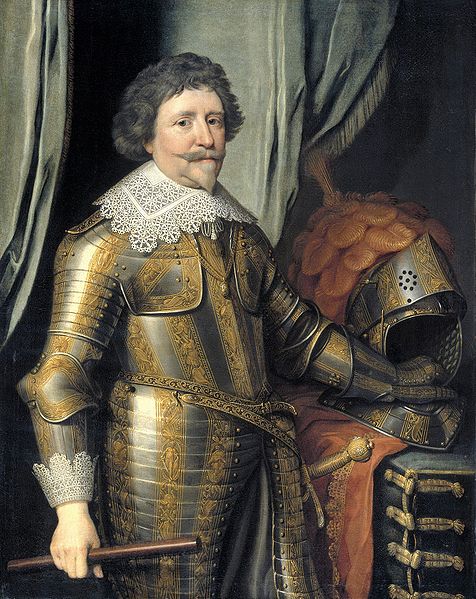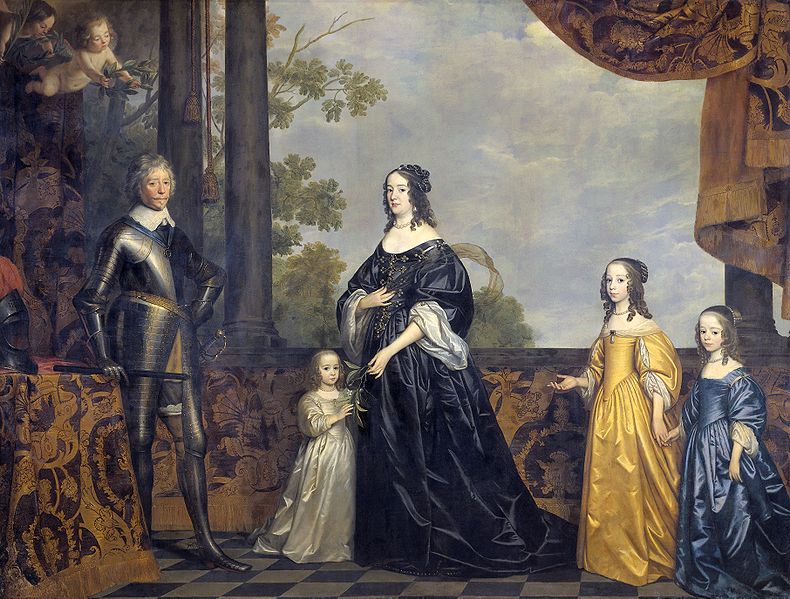<Back to Index>
- Classical Scholar Johann Georg Graevius, 1632
- Novelist Vicente Blasco Ibáñez, 1867
- Prince of Orange Frederik Hendrik, 1584
PAGE SPONSOR


Frederick Henry, or Frederik Hendrik in Dutch (29 January 1584 – 14 March 1647), was the sovereign Prince of Orange and stadtholder of Holland, Zeeland, Utrecht, Guelders, and Overijssel from 1625 to 1647.
Frederick Henry was born on 29 January 1584 in Delft, Holland, Dutch Republic. He was the youngest child of William the Silent and Louise de Coligny. His father William was stadtholder of Holland, Zeeland, Utrecht, and Friesland. His mother Louise was daughter of the Huguenot leader Gaspard de Coligny, and was the fourth wife of his father. He was thus the half brother of his predecessor Maurice of Orange, no issue, deceased in 1625.
Frederick Henry was born six months before his father's assassination on 10 July 1584. The boy was trained to arms by his elder brother Maurice,
one of the finest generals of his age. After Maurice threatened to
legimitize his illegitimate children if he did not marry, Frederick
Henry married Amalia of Solms - Braunfels in 1625. His illegitimate son by Margaretha Catharina Bruyns (1595 – 1625), Frederick Nassau de Zuylenstein was born in 1624 before his marriage. This son later became the governor of the young William III of England for seven years. On the death of Maurice in 1625, Frederick Henry succeeded him in his paternal dignities and estates, and also in the stadtholderates of the five provinces of Holland, Zeeland, Utrecht, Overijssel and Guelders, and in the important posts of captain and admiral - general of the Union (commander - in - chief of the Dutch States Army and of the Dutch navy). Frederick
Henry proved himself almost as good a general as his brother, and a far
more capable statesman and politician. For twenty - two years he remained
at the head of government in the United Provinces, and in his time the
power of the stadtholderate reached its highest point. The "Period of
Frederick Henry," as it is usually styled by Dutch writers, is
generally accounted the golden age of
the republic. It was marked by great military and naval triumphs, by
worldwide maritime and commercial expansion, and by a wonderful
outburst of activity in the domains of art and literature. The chief military exploits of Frederick Henry were the sieges and captures of Grol in 1627, 's-Hertogenbosch in 1629, of Maastricht in 1632, of Breda in 1637, of Sas van Gent in 1644, and of Hulst in
1645. During the greater part of his administration the alliance with
France against Spain had been the pivot of Frederick Henry's foreign
policy, but in his last years he sacrificed the French alliance for the
sake of concluding a separate peace with Spain, by which the United
Provinces obtained from that power all the advantages they had been
seeking for eighty years. Frederick Henry built the country houses Huis Honselaarsdijk, Huis ter Nieuwburg, and for his wife Huis ten Bosch, and he renovated the Noordeinde Palace in The Hague. Huis Honselaarsdijk and Huis ter Nieuwburg are now demolished.
Frederick Henry died on 14 March 1647 in
The Hague, Holland, Dutch Republic. He left a wife, a son William II, Prince of Orange, four daughters, and the illegitimate son Frederick Nassau de Zuylenstein. On Frederick Henry's death, he was buried with great pomp beside his father and brother at Delft. The treaty of Munster,
ending the long struggle between the Dutch and the Spaniards, was not
actually signed until 30 January 1648, the illness and death of the
stadtholder having caused a delay in the negotiations. Frederick Henry
left an account of his campaigns in his Mémoires de Frédéric Henri (Amsterdam, 1743).